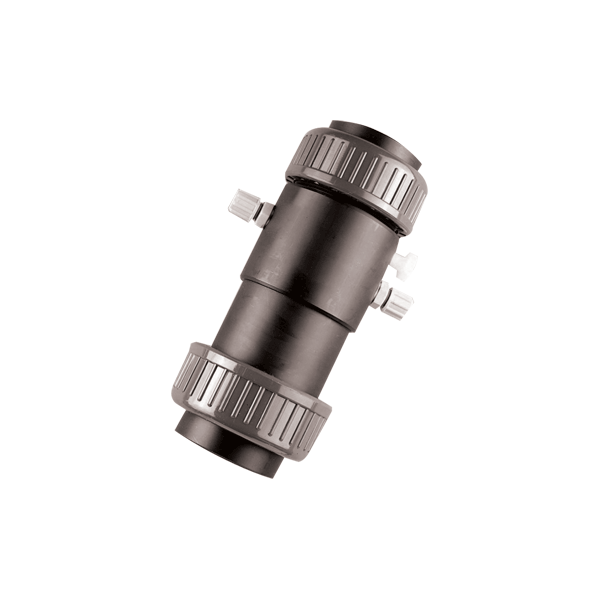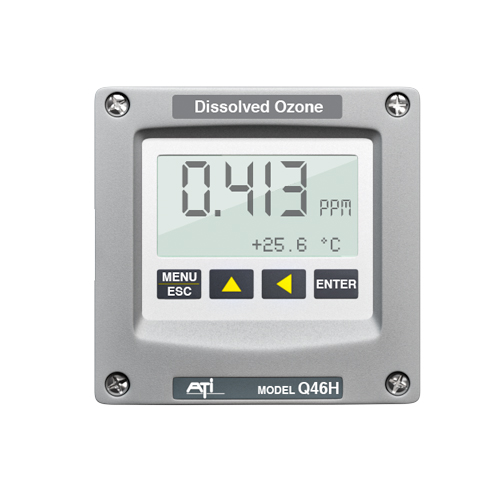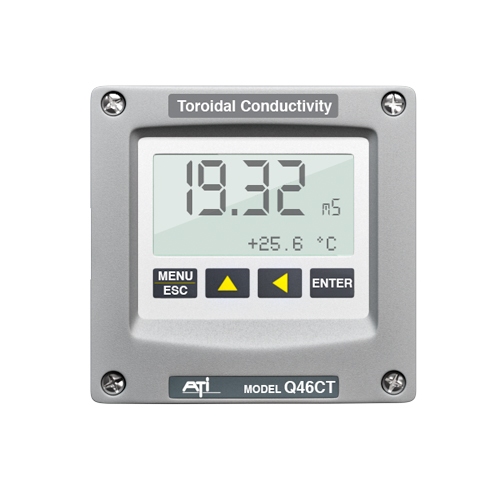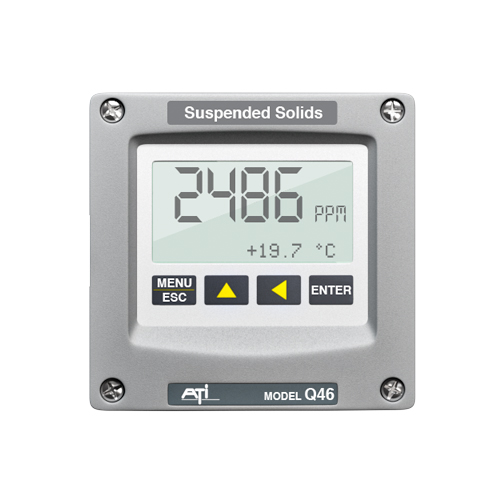Description
Description
ATI’s Model Q46/76 Turbidity Monitor is designed to meet the needs of both municipal drinking water systems and industrial water treatment for reliable, low range turbidity measurement. Using an infrared light source and a 90° scatter measurement, the system provides high sensitivity measurement with unmatched zero stability. Turbidity measurements down to 0.001 NTU or as high as 4000 NTU can be measured with the same monitor, eliminating the need for separate high and low range instruments.
Turbidity is a general indicator of the optical clarity of water and is defined as the amount of light scattered by particles in solution. In practice, a light beam is directed into a water sample and a photo detector measures the light scattered at 90° to the incident light beam. While other scatter angles are possible, the 90° measurement angle has become the standard for turbidity measurement in most water systems. It is used as a relative indicator of the amount of suspended solids in solution and is measured in virtually all drinking water systems. It is also used in industrial water treatment systems as an indicator of product water quality.
The turbidity sensor used in the ATI’s Model Q46/76 Turbidity Monitor is is a planer sensor with the light source and photo detector mounted on a flat face. Lenses in front of the light source direct the beam of light at a 45° angle into the sample. Another lens in front of the photodetector collects the 90° scattered light and directs it to the detector. The signal generated by the detector is amplified inside the sensor for transmission to the display unit. In low range applications, periodic pulsing of the light source allows the sensor zero to be adjusted automatically for improved stability. Turbidity sensors are available for measurement in a pressurized flowcell or for direct submersion in open tanks. A 1½” flow T assembly is also available for direct in line measurements. The flowcell is required for very low measurements (0-4 NTU), while the submersion unit may be used for higher turbidity applications such as wastewater effluent or raw water.
The flowcell used with ATI’s turbidity system is designed to eliminate ambient light effects and to maintain sample pressure inside the flowcell. This in turn minimizes air bubble formation that is a common problem in many turbidity systems and can cause measurement errors. There is also a modified flowcell for raw water applications that allows for higher amounts of suspended particles to pass through without creating clogging or setting issues.
The turbidity electronics unit is an AC or DC powered instrument providing an LCD display of turbidity value, as well as indication of alarm status and instrument diagnostics. The NEMA 4X housing can be wall, pipe or handrail mounted using the universal mounting kit included with each system.
The monitor provides display of turbidity over a variety of operating ranges. The minimum display range of 0-2 NTU provides resolution down to 0.001 NTU and is suitable for almost any final filter monitoring application. Ranges of 0-20, 0-200 or 0-400 NTU are available for raw water or clarifier effluent monitoring. The Q46/76 provides three programmable SPDT alarm relays, as well as two isolated 4-20 mA outputs. The analog outputs may be programmed for full scale outputs as low as 0-0.2 NTU.
The Q46/76 Turbidity Monitor also provides sensor diagnostic functions to warn of conditions that cause inaccurate or invalid readings. The sensor is continuously monitored for optical fouling, and will display an alarm message should the sensor require cleaning. In addition, the sensor will detect the lack of water in the flowcell and provide a dry cell when an air interface is detected. These alarm conditions will cause a third alarm relay to activate, which can be used to indicate these conditions remotely.
The Q-Blast option provides the ideal answer for submersible turbidity applications such as wastewater effluent. employing a unique air blast cleaning method, sensors can be cleaned as often as necessary without operator attention. Pulses of pressurized air delivered through a nozzle at the tip of the sensor remove accumulated solids from critical sensing surfaces, resulting in accurate and reliable measurements.
The Q-Blast auto clean assembly is housed in a NEMA 4X enclosure suitable for indoor or outdoor use. The system includes an integral compressor and air pulse control components with a power supply for the entire air supply system incorporated into the design. A simple connection to the Q46/76 monitor provides the sequencing for the system and allows the operator to select cleaning frequencies as often as once every hour to as little as once every 999 hours. To insure performance in extreme cold condition, a thermostatically controlled heater is included in the assembly, allowing operation down to -40°C.
ATI is now a Badger Meter Brand.









